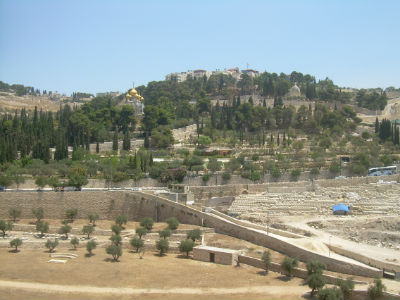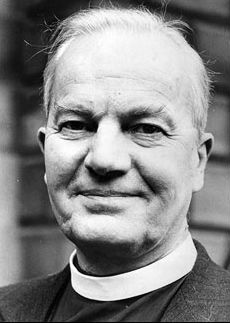 Mount of Olives from where Jesus ascended and to which he has promised to return.
Mount of Olives from where Jesus ascended and to which he has promised to return.By Neil Earle
 Mount of Olives from where Jesus ascended and to which he has promised to return.
Mount of Olives from where Jesus ascended and to which he has promised to return.As a boy I used to love Easter.
Easter meant chocolate eggs, warmer spring days, a decorated church sanctuary and the ending of 40 days of Lent, where once, in a heroic display of self-control, I gave up comic books for 40 days and nights.
 Einstein's generation of physicists showed our universe was open to surprise and change.
Einstein's generation of physicists showed our universe was open to surprise and change.Then I became a man and put away childish things and saw what was really going on. Easter is all about the resurrection and ascension of Jesus Christ to the highest heavens. But what did that mean – for Jesus and his Father and for the rest of us.
Lots.
Here are at last four things that the resurrection of Jesus from a stone tomb in Jerusalem accomplished.
1. First Jesus’ resurrection confirmed all the promises made in an earlier era.
St. Paul said it in Romans 15:8, “Christ has become a servant…to confirm the promises made to the patriarchs, so that the Gentiles might glorify God for his mercy…”
God revealed to Abraham and his descendants his purposes: to include the entire human race in his plan of salvation, to reconcile all nations to the Father (2 Corinthians 5:19), and ultimately for all to share in his eternal glory (Hebrews 2:10). That necessitated removing the curse of sin the human race had brought upon itself. “Justification” is the New Testament word employed to show how Christ’s death as the living Son of God who was equal with God (John 10:30; 5:18), paid fully for the sins of the whole world.
All wonderful news, but the Bible says even more. It says we are saved by his life in Romans 5:10.
 Jennifer Garner's latest move shows miracles still happen.
Jennifer Garner's latest move shows miracles still happen.By being lifted from death through the resurrection Jesus ascended to the heavenly places to send the Holy Spirit to all who repent and ask. The Holy Spirit is the Spirit of Life. He was there at creation (Genesis 1:2) and now is on mission to infuse life into all who submit themselves to the Father and the Son (John 6:63).
That is wonderful enough but Paul says that “if the Spirit of Him who raised Jesus from the dead is living in you, he who raised Christ from the dead will also give life to your mortal bodies through his Spirit who lives in you” (Romans 8:11).
Because of Jesus’ resurrection, our resurrection is assured (Romans 8:29). And this whole wonderful process is signed, sealed and delivered – we could say – through the resurrection of Jesus as the first-fruits of those who will rise from the grave (1 Corinthians 15:23).
2. Secondly, Jesus ascended to make intercession for us.
One of the promises held out in the Old Testament era was for people to come out of their graves, boldly illustrated in Ezekiel’s vision of the Valley of Dry Bones (Ezekiel 37:12). Another was the plenteous forgiveness of sins. The writer of Psalm 130 cried out to God very eloquently, “If you, O Lord, kept a record of sins, O Lord, who could stand? But there is forgiveness...for with the Lord is unfailing love and with him is full redemption. He himself will redeem Israel from all their sins.”
Thank God that some in the Old Covenant dispensation understood that sin could be forgiven upon crying out to God. The sacrificial system could at least accomplish that much .But as Derek Kidner writes, they did not quite see how this would be done except through some dark hints in passages such as Isaiah 53.
With Jesus’ death, burial and resurrection the whole process was on full display. His death paid our penalty, his ascension made possible the sending of the Spirit of life into all flesh, but now Jesus also assumes the role of High Priest, both to hear and forgive sins. One thing that infuriated the enemies of Jesus when he was a roving teacher was his claim to be able to forgive sins (Mark 2:7). But now he is our all-the-time/ on-the-job Intercessor. In contrast to the Old Covenant physical priesthood, “because Jesus lives for ever, he has a permanent priesthood. Therefore he is able to save completely those who come to God through him, because he always lives to intercede for them “(Hebrews 7:24-25).
If sin is a factor in our lives – and where is it not? – then we should rejoice that Jesus himself has gone to heaven to intercede for us as a merciful High Priest.
3.)Third, Jesus on high, gives us the power for daily living.
Before Jesus left this earth he told his disciples, “All authority in heaven and earth has been given to me” (Matthew 28:18). Some of that power is deployed to help God’s suffering servants on this earth. Many are the reports that reach Christian agencies of healings, open doors, interventions, miracles, and even signs and wonders done when godly people call on the name of Jesus Christ in their daily lives. “And I will do whatever you ask in my name, so that the Son will bring glory to the Father” (John 14:13).
The only qualification to that statement is we must ask according to God’s will whose perspective is infinitely broader than our own (1 John 5:14). Still, every pastor, very church has marvelous deliverances they can recount. In 1978 I was sent to a church area in Western Canada where a little boy two years old was suffering from cerebral palsy and more. He looked frail and we all hoped for his recovery but his parents had rugged faith, hope and charity. Sixteen years later his mother wrote an article for our church publication showing that her son had just finished driving her in their car to an errand. “It’s been a very good day,” she declaimed modestly.
That young boy suffered an illness in the first month of his life which left reduced lung capacity, she recounted, but now he plays the trumpet after three lung collapses and surgery for correction of the diaphragm.
The mother reported how by age 18 her son “attended hundreds of therapy classes…These have all been beneficial but even some therapists recognize that there is a stronger hand at work…only a limp is evident when he walks.”
Praise God! Yes, our powerful and loving and resurrected Savior does have all power and sometimes it is displayed in a way that is hard to deny. “And how!” one of my former pastors might have said.
4. Fourth, Jesus promised to be active in our lives through the Holy Spirit. Jesus made appearances to his friends and disciples for forty days after his resurrection (Acts 1:3). After that he ascended formally to heaven, though he had been in God’s presence from the moment of his rising (see box). Then came the arrival of the Holy Spirit on the day of Pentecost as he had promised: “But the Counselor, the Holy Spirit, whom the Father will send in my name, will teach you all things and will remind you of everything I have said to you. Peace I leave with you, my peace I give you” (John 14:26-27).
 Thomas Torrance
Thomas TorranceJesus’ ability to be in heaven and earth, seemingly simultaneously, changed our perceptions of time and space. God is utterly independent of time and space. But the sending of the Spirit opened up a new dimension in our relationship with the Godhead. In the words of Thomas Torrance, “Thus the resurrection means that the Word which God sent forth in creation and sent forth in a new way in the incarnation (Christ’s becoming human), did not return void but accomplished what it was sent to do (Isaiah 55:11, Psalm 33:9).
There it is. The purposes of God in the resurrection changed our world and will change it even more in the future. Thank God for his wonderful plan.